10. Asdrubal Cabrera: Shortstop
Age: 21 Height: 6’0” Weight: 170 Bats: Switch Throws: Right
Stats & Stuff: The Indians obtained Cabrera from the Seattle Mariners in a late-June trade last year in exchange for Eduardo Perez. In 2005, Cabrera hit a combined .295 at three stops in the Mariners organization. Last year, he hit a combined .249/.310/.349 with 4 HRs, 36 RBIs and 12 stolen bases in 112 games in the Mariners and Indians system.
The Good: The Indians are very excited about Cabrera’s defense. His future in the big leagues will ultimately be decided by how he performs with the bat, but right now all the rave is with his defense. Cabrera is a gold-glove caliber shortstop who has excellent hands, footwork and very good accuracy. An All-Star short-stop in 2003 and 2004, in 2005 he played second-base and was voted the top defensive second-baseman in the Single-A Midwest League. Cabrera is an acrobat in the field, and has very good short-stop instincts. He gets a great read on balls, and his excellent range and instincts allow him to get to balls that most short-stops can’t get to. He has very good body control, and his athleticism is displayed with his showy actions in the field.
The Bad: As is the case with most young defensive short-stops, Cabrera’s bat is his biggest question mark. At 20 years old last year, he was the youngest player in all of Triple-A, so there is still a lot of time to development the bat and his approach at the plate. Cabrera is a switch-hitter with average speed, but he doesn’t have any offensive tools that stand out. He has an inside-out swing from the right-side of the plate, and feels for contact from the left-side. At times he can be overly aggressive at the plate, and he need to work on becoming a more disciplined hitter and drawing more walks. His throwing arm is also only average, but his plus accuracy makes up for it.
The Outlook: When the Indians traded for Cabrera last June, what the Indians got in return in Cabrera was a defensive wizard. Clearly, the reason Cabrera was picked up was for his defense, which is considered major league ready. There is no question that the defensive struggles Indians starting shortstop Jhonny Peralta had in 2006 paved the way for Shapiro to look for more defensive help, namely in the middle of the diamond. Cabrera provides depth at a position of need in the farm system, and is looked at as an eventual everyday player at the major league level. In 2007, he will be back at Buffalo and work on his offense. Depending on what happens with Peralta, Cabrera could see time with the Indians in 2007 and should push for a job as a starter or utility player in Spring Training in 2008.
9. John Drennen: Outfielder
Age: 20 Height: 6’0” Weight: 190 Bats: Left Throws: Left
Stats & Stuff: The Indians snatched Drennen up with their supplemental pick in the 1st round of the 2005 Draft out of Rancho Bernardo High in San Diego, which has produced a ton of elite high school prospects of late. Knowing Drennen had a scholarship in hand to attend and play at UCLA, the Indians quickly signed Drennen for $1 million. He also made national headlines last June when he hit a tape measure home run off Roger Clemens. In Drennen’s professional debut at Burlington in 2005 he hit .238/.325/.435 with 8 HRs, 29 RBIs and 6 stolen bases in 51 games. Last year, Drennen combined to hit .295/.384/.425 with 6 HRs, 38 RBIs and 8 stolen bases in 98 games as Lake County and Kinston. Drennen’s numbers dipped at Kinston as he was overmatched and wore down some, but earlier at Lake County he was very good as he hit .321/.409/.471 with 6 HRs and 30 RBIs.
The Good: The Indians selected Drennen because they loved his advanced bat and polished approach to hitting. Drennen has a compact build with good power, and also creates a nice smooth bat path with his swing. Although he is somewhat undersized, he packs a lot of punch in his swing and has good pop and a dynamite bat. Right now, he is more a gap hitter, but as he matures he is expected to develop more power. At the plate, he has a good inside out swing and he uses the entire field, especially against lefties. He is an extremely hard worker and is very aggressive at the plate, on the bases and in the field. He is also a smart hitter, and is an energy player with a motor that does not stop. His playing style, build and ability often has been compared to Jeremy Reed, and some have compared him to former Indian Brian Giles.
The Bad: While Drennen is an outstanding hitter, he leaves a lot to be desired as a defender and base-runner. He has good instincts as a runner, but only has slightly above average speed. His biggest weakness is his defense, as his arm is below average and his range in the outfield is limited, which will eventually play him out of center-field. He wore down the second half of last season, but that is to be expected with him being in a full-season league while only a year removed from high school. Drennen also had a minor injury setback early in the year when he dislocated the end joint to his thumb, and ended up missing several weeks of action.
The Outlook: The Indians are loaded in the organization with good outfield prospects. Due to his age and the players in front of him, Drennen is a few years away from making an impact at the major league level. He should start the 2007 season by repeating at Kinston, and likely will play there the entire year because he is roadblocked by so many outfielders above him at Akron and Buffalo.
8. Rafael Perez: Left-handed Pitcher
Age: 24 Height: 6’3” Weight: 185 Bats: Left Throws: Left
Stats & Stuff: Perez is a product of the Indians scouting efforts in the Latin American countries, as he signed as a free agent out of the Dominican Republic in 2002. In his first season in the Indians system in 2003, Perez was named the Appalachian League Pitcher of the Year after posting a 9-3 record with a 1.70 ERA and .220 BAA for short-season rookie level Burlington. He moved up a notch in 2004 to Lake County and went 7-6 with a 4.85 ERA in 22 starts, and then really broke through in 2005 going a combined 12-8 with a 2.62 ERA at Kinston and Akron. Last year, he went a combined 4-8 with a 2.76 ERA and held opposing batters to a .213 BAA in 25 appearances (12 starts) at Akron and Buffalo. In brief action with Cleveland, Perez was 0-0 with a 4.38 ERA in the 12.1 innings he pitched, and he held batters to a .204 BAA.
The Good: Perez throws a powerful 92-94 MPH live fastball with great action. As he grows into his body more and fills out his frame the Indians feel he could add more velocity to his fastball. His slider is rated as the best in the entire system, and many scouts feel it will be a devastating pitch in a major league bullpen. Last year at Buffalo, Perez continued to gain confidence in the bullpen and improved his fastball command. In his brief stint with the Indians in 2006, the organization loved what he showed at Baltimore when he was first called up.
Perez’s arm slot and 3/4 delivery creates uneasiness for left-handed hitters where they can’t dig in against him. Late in 2005, for the first time in his career Perez was used out of the bullpen and he was dominant. In his seven relief appearances he posted a 1.26 ERA in 14.1 IP, and allowed only 11 hits and struck out 11. Situation-wise, Perez has owned left-handers. At Akron in 2005, left-handers hit only .133 (8 for 60) off of him, and last year combined at Akron and Buffalo left-handers only hit .122 off of him (12 for 98). In addition, lefties only had a .210 SLG% against him at Akron, and a .115 SLG% at Buffalo. Those numbers against left-handers are what make Perez such an exciting relief prospect.
The Bad: Perez is still transitioning to the relief role. Last year, the Indians worked with him in developing a more regimented routine in getting prepared for game action coming out of the bullpen so he warms up quicker. Things were speeding up on him some during his brief stay in Cleveland, and some of his problems in Cleveland were a result of mechanical breakdowns, and a lack of getting proper leverage on hitters with his pitches. Also, his ball was not on the required downhill plane and was being left out arm side.
The Outlook: When the Indians first signed Perez, they viewed his future in the major leagues as a left-handed reliever in the bullpen. Even though the Indians projected him as a reliever, last year the Indians continued to start him in order to stretch him out and keep starting pitching options open for the organization. While the door is not closed on him being a starter in the major leagues, the Indians have a great need for left-handed relief pitching this year and beyond. With how dominant he has been against lefties the past few seasons, for now his need is in the bullpen. Perez should compete with Tony Sipp and Juan Lara for a job as the Indians second left-hander in the bullpen, and is a heavy favorite to win the job.
7. Brad Snyder: Outfielder
Age: 24 Height: 6’3” Weight: 200 Bats: Left Throws: Left
Stats & Stuff: The Indians drafted Snyder in the 1st round (31st overall) of the 2003 Draft out of Ball State University. Although they dipped slightly, his 2006 numbers were pretty much a carbon copy of his 2005 numbers. In 2005, Snyder hit a combined .279/.354/.495 with 22 HRs and 82 RBIs combined at Kinston and Akron. Last year, Snyder hit .270/.351/.446 with 18 HRs and 72 RBIs in a return trip to Akron. Also, last year Snyder walked 62 times and struckout 158 times in 523 at bats, compared to walking 49 times and striking out 158 times in 513 at bats in 2005. The 158 strikeouts at Akron last year set a club record. Prior to being drafted, he was the 2003 Mid-American Conference Player of the Year.
The Good: Snyder’s stock fell somewhat last year, but the power and physical abilities are there. He comes in ranked above John Drennen mainly because of his power bat as well as his superior defense and base-running. Snyder’s compact stroke generates excellent bat speed, and he has very good power to all fields. His swing is geared for pitches in the zone, and when he stays within himself he hits almost everything hard. Snyder has good speed, which plays up due to his very good instincts on the basepaths. Snyder has mostly played center-field during his time with the Indians, but his power bat and plus arm project him as a major league right-fielder.
With special attention placed on his two-strike approach last season, Snyder consistently hit balls hard the other way. He also was shortening up on his swing, and taking what he was being given and going with pitches, which is something he hardly ever had done in the past. Around mid-season last year, the Indians decided to move Snyder up in the lineup to the leadoff spot from his normal 3-4 spot in the order. The idea behind the move was to get him to see more fastballs and protect him for the time being from seeing multiple pitch types each at bat. The shift in the lineup helped Snyder with his two-strike approach, and the results after the shift were favorable. It was definitely a grind for Snyder last season to work and develop his two strike approach, but like a lot of things in baseball there were good things happening last year with Snyder beyond the numbers.
The Bad: The reason Snyder returned to Akron in 2006 was to work on his two-strike approach and plate discipline. While there were some positives mentioned above with the advancement of his two-strike approach, the progress shown was limited and the strikeout total is still a huge concern. With his lack of discipline, he is still very susceptible to high and outside pitches and pitches in the dirt. In addition to his two-strike approach, the Indians worked extensively with Snyder last year on controlling his front hip and shoulder since he has a habit of pulling it too soon, which results in an incorrect bat path.
The Outlook: When Dave Hudgens came on board as the Minor League Hitting Coordinator last year, he implemented an organization-wide philosophy of drawing walks 10 percent of the time. With the addition of this new hitting philosophy, the idea was for hitters to develop a more patient hitting approach and work counts. One of the players targeted with this new philosophy was Brad Snyder, and while he struggled at times last year he did show some improvement with his 62 walks. The last thing missing in Snyder’s game is the two-strike approach and plate discipline, and it is something he will continue to work on at Buffalo in 2007.
6. Tony Sipp: Left-handed Pitcher
Age: 23 Height: 6’0” Weight: 190 Bats: Left Throws: Left
Stats & Stuff: The Indians gambled when they selected Sipp in the 45th round of the 2004 Draft. Coming out of Clemson, Sipp had only pitched in 22 career games and many felt he would be too costly to sign. But, the Indians found a diamond in the rough and after he impressed the Indians in the Cape Cod League they gladly paid him an unheard of $130,000 (for a 45th rounder) to sign. It didn’t take long for Sipp to impress. In his professional debut in 2004 at short-season Mahoning Valley Sipp went 3-1 with a 3.16 ERA, but more impressive were his 74 strikeouts in only 42.2 IP. In 2005, Sipp went 6-3 with a 2.40 ERA and 130 strikeouts in 116.1 IP in 35 combined appearances (17 starts) at Lake County and Kinston. Last year, Sipp went 4-2 with a 3.13 ERA in 29 appearances (4 starts) with 80 strikeouts in 60.1 IP with Akron. In his minor league career, Sipp has 343 strikeouts in 266.1 IP, good for an outstanding 11.60 strikeouts per nine innings average and also has a low 6.49 hits per nine innings average. Sipp also held batters to a .202 BAA in 2006, and while he did well against left-handers (.226 BAA), he dominated right-handed hitters in holding them to a .191 BAA.
The Good: Sipp is a power-armed pitcher who has an impressive three-pitch arsenal. His stuff is big-time, fronted by a fastball and slider that both grade out as plus pitches, with the slider being a plus-plus pitch. Both the fastball and slider are considered out pitches. His fastball has good movement and consistently sits in the 91-94 MPH range, although his quick arm action and excellent deception makes it look a lot faster.
He is still developing a changeup and has a good feel for it, but even after only over a year of using it, Indians Scouting Director John Mirabelli commented that the changeup is Sipp’s best pitch. With the changeup, hitters can’t sit on his slider and fastball. The development of his changeup has jumped him into an elite level of relief prospects, so much so, that Baseball America ranked him as the #2 closer prospect in all the minors. With three very good pitches, a player of Sipp’s caliber would normally project as a reliever. But, the Indians love his potential as a dominant late-inning reliever. Sipp is also extremely athletic, and his athleticism allows him to consistently repeat his delivery well. He is a very aggressive on the mound, and has prodigious aptitude.
The Bad: While he has made great strides with the changeup, he still is working on maintaining consistent command with it. He also is a little undersized, and lacks pinpoint control. Sipp also missed some time due to injury last year, going on the disabled list for two months first with an oblique injury and then later with left elbow inflammation.
The Outlook: Sipp could be a candidate for the closer’s job in Cleveland in 2008 and beyond. For now, Sipp is a candidate to fill the left-handed pitching void in the Indians bullpen in 2007. But, unlike Rafael Perez, he has yet to pitch any innings at Triple-A or in the majors, so he probably won’t be a bullpen option until mid-season. If he is lights out and impressive in Spring Training, it is possible the Indians may go with him, but considering how conservative the Indians tend to be with their prospects, he’ll likely open the year as the Buffalo closer.
Age: 21 Height: 6’0” Weight: 170 Bats: Switch Throws: Right
Stats & Stuff: The Indians obtained Cabrera from the Seattle Mariners in a late-June trade last year in exchange for Eduardo Perez. In 2005, Cabrera hit a combined .295 at three stops in the Mariners organization. Last year, he hit a combined .249/.310/.349 with 4 HRs, 36 RBIs and 12 stolen bases in 112 games in the Mariners and Indians system.
The Good: The Indians are very excited about Cabrera’s defense. His future in the big leagues will ultimately be decided by how he performs with the bat, but right now all the rave is with his defense. Cabrera is a gold-glove caliber shortstop who has excellent hands, footwork and very good accuracy. An All-Star short-stop in 2003 and 2004, in 2005 he played second-base and was voted the top defensive second-baseman in the Single-A Midwest League. Cabrera is an acrobat in the field, and has very good short-stop instincts. He gets a great read on balls, and his excellent range and instincts allow him to get to balls that most short-stops can’t get to. He has very good body control, and his athleticism is displayed with his showy actions in the field.
The Bad: As is the case with most young defensive short-stops, Cabrera’s bat is his biggest question mark. At 20 years old last year, he was the youngest player in all of Triple-A, so there is still a lot of time to development the bat and his approach at the plate. Cabrera is a switch-hitter with average speed, but he doesn’t have any offensive tools that stand out. He has an inside-out swing from the right-side of the plate, and feels for contact from the left-side. At times he can be overly aggressive at the plate, and he need to work on becoming a more disciplined hitter and drawing more walks. His throwing arm is also only average, but his plus accuracy makes up for it.
The Outlook: When the Indians traded for Cabrera last June, what the Indians got in return in Cabrera was a defensive wizard. Clearly, the reason Cabrera was picked up was for his defense, which is considered major league ready. There is no question that the defensive struggles Indians starting shortstop Jhonny Peralta had in 2006 paved the way for Shapiro to look for more defensive help, namely in the middle of the diamond. Cabrera provides depth at a position of need in the farm system, and is looked at as an eventual everyday player at the major league level. In 2007, he will be back at Buffalo and work on his offense. Depending on what happens with Peralta, Cabrera could see time with the Indians in 2007 and should push for a job as a starter or utility player in Spring Training in 2008.
9. John Drennen: Outfielder
Age: 20 Height: 6’0” Weight: 190 Bats: Left Throws: Left
Stats & Stuff: The Indians snatched Drennen up with their supplemental pick in the 1st round of the 2005 Draft out of Rancho Bernardo High in San Diego, which has produced a ton of elite high school prospects of late. Knowing Drennen had a scholarship in hand to attend and play at UCLA, the Indians quickly signed Drennen for $1 million. He also made national headlines last June when he hit a tape measure home run off Roger Clemens. In Drennen’s professional debut at Burlington in 2005 he hit .238/.325/.435 with 8 HRs, 29 RBIs and 6 stolen bases in 51 games. Last year, Drennen combined to hit .295/.384/.425 with 6 HRs, 38 RBIs and 8 stolen bases in 98 games as Lake County and Kinston. Drennen’s numbers dipped at Kinston as he was overmatched and wore down some, but earlier at Lake County he was very good as he hit .321/.409/.471 with 6 HRs and 30 RBIs.
The Good: The Indians selected Drennen because they loved his advanced bat and polished approach to hitting. Drennen has a compact build with good power, and also creates a nice smooth bat path with his swing. Although he is somewhat undersized, he packs a lot of punch in his swing and has good pop and a dynamite bat. Right now, he is more a gap hitter, but as he matures he is expected to develop more power. At the plate, he has a good inside out swing and he uses the entire field, especially against lefties. He is an extremely hard worker and is very aggressive at the plate, on the bases and in the field. He is also a smart hitter, and is an energy player with a motor that does not stop. His playing style, build and ability often has been compared to Jeremy Reed, and some have compared him to former Indian Brian Giles.
The Bad: While Drennen is an outstanding hitter, he leaves a lot to be desired as a defender and base-runner. He has good instincts as a runner, but only has slightly above average speed. His biggest weakness is his defense, as his arm is below average and his range in the outfield is limited, which will eventually play him out of center-field. He wore down the second half of last season, but that is to be expected with him being in a full-season league while only a year removed from high school. Drennen also had a minor injury setback early in the year when he dislocated the end joint to his thumb, and ended up missing several weeks of action.
The Outlook: The Indians are loaded in the organization with good outfield prospects. Due to his age and the players in front of him, Drennen is a few years away from making an impact at the major league level. He should start the 2007 season by repeating at Kinston, and likely will play there the entire year because he is roadblocked by so many outfielders above him at Akron and Buffalo.
8. Rafael Perez: Left-handed Pitcher
Age: 24 Height: 6’3” Weight: 185 Bats: Left Throws: Left
Stats & Stuff: Perez is a product of the Indians scouting efforts in the Latin American countries, as he signed as a free agent out of the Dominican Republic in 2002. In his first season in the Indians system in 2003, Perez was named the Appalachian League Pitcher of the Year after posting a 9-3 record with a 1.70 ERA and .220 BAA for short-season rookie level Burlington. He moved up a notch in 2004 to Lake County and went 7-6 with a 4.85 ERA in 22 starts, and then really broke through in 2005 going a combined 12-8 with a 2.62 ERA at Kinston and Akron. Last year, he went a combined 4-8 with a 2.76 ERA and held opposing batters to a .213 BAA in 25 appearances (12 starts) at Akron and Buffalo. In brief action with Cleveland, Perez was 0-0 with a 4.38 ERA in the 12.1 innings he pitched, and he held batters to a .204 BAA.
The Good: Perez throws a powerful 92-94 MPH live fastball with great action. As he grows into his body more and fills out his frame the Indians feel he could add more velocity to his fastball. His slider is rated as the best in the entire system, and many scouts feel it will be a devastating pitch in a major league bullpen. Last year at Buffalo, Perez continued to gain confidence in the bullpen and improved his fastball command. In his brief stint with the Indians in 2006, the organization loved what he showed at Baltimore when he was first called up.
Perez’s arm slot and 3/4 delivery creates uneasiness for left-handed hitters where they can’t dig in against him. Late in 2005, for the first time in his career Perez was used out of the bullpen and he was dominant. In his seven relief appearances he posted a 1.26 ERA in 14.1 IP, and allowed only 11 hits and struck out 11. Situation-wise, Perez has owned left-handers. At Akron in 2005, left-handers hit only .133 (8 for 60) off of him, and last year combined at Akron and Buffalo left-handers only hit .122 off of him (12 for 98). In addition, lefties only had a .210 SLG% against him at Akron, and a .115 SLG% at Buffalo. Those numbers against left-handers are what make Perez such an exciting relief prospect.
The Bad: Perez is still transitioning to the relief role. Last year, the Indians worked with him in developing a more regimented routine in getting prepared for game action coming out of the bullpen so he warms up quicker. Things were speeding up on him some during his brief stay in Cleveland, and some of his problems in Cleveland were a result of mechanical breakdowns, and a lack of getting proper leverage on hitters with his pitches. Also, his ball was not on the required downhill plane and was being left out arm side.
The Outlook: When the Indians first signed Perez, they viewed his future in the major leagues as a left-handed reliever in the bullpen. Even though the Indians projected him as a reliever, last year the Indians continued to start him in order to stretch him out and keep starting pitching options open for the organization. While the door is not closed on him being a starter in the major leagues, the Indians have a great need for left-handed relief pitching this year and beyond. With how dominant he has been against lefties the past few seasons, for now his need is in the bullpen. Perez should compete with Tony Sipp and Juan Lara for a job as the Indians second left-hander in the bullpen, and is a heavy favorite to win the job.
7. Brad Snyder: Outfielder
Age: 24 Height: 6’3” Weight: 200 Bats: Left Throws: Left
Stats & Stuff: The Indians drafted Snyder in the 1st round (31st overall) of the 2003 Draft out of Ball State University. Although they dipped slightly, his 2006 numbers were pretty much a carbon copy of his 2005 numbers. In 2005, Snyder hit a combined .279/.354/.495 with 22 HRs and 82 RBIs combined at Kinston and Akron. Last year, Snyder hit .270/.351/.446 with 18 HRs and 72 RBIs in a return trip to Akron. Also, last year Snyder walked 62 times and struckout 158 times in 523 at bats, compared to walking 49 times and striking out 158 times in 513 at bats in 2005. The 158 strikeouts at Akron last year set a club record. Prior to being drafted, he was the 2003 Mid-American Conference Player of the Year.
The Good: Snyder’s stock fell somewhat last year, but the power and physical abilities are there. He comes in ranked above John Drennen mainly because of his power bat as well as his superior defense and base-running. Snyder’s compact stroke generates excellent bat speed, and he has very good power to all fields. His swing is geared for pitches in the zone, and when he stays within himself he hits almost everything hard. Snyder has good speed, which plays up due to his very good instincts on the basepaths. Snyder has mostly played center-field during his time with the Indians, but his power bat and plus arm project him as a major league right-fielder.
With special attention placed on his two-strike approach last season, Snyder consistently hit balls hard the other way. He also was shortening up on his swing, and taking what he was being given and going with pitches, which is something he hardly ever had done in the past. Around mid-season last year, the Indians decided to move Snyder up in the lineup to the leadoff spot from his normal 3-4 spot in the order. The idea behind the move was to get him to see more fastballs and protect him for the time being from seeing multiple pitch types each at bat. The shift in the lineup helped Snyder with his two-strike approach, and the results after the shift were favorable. It was definitely a grind for Snyder last season to work and develop his two strike approach, but like a lot of things in baseball there were good things happening last year with Snyder beyond the numbers.
The Bad: The reason Snyder returned to Akron in 2006 was to work on his two-strike approach and plate discipline. While there were some positives mentioned above with the advancement of his two-strike approach, the progress shown was limited and the strikeout total is still a huge concern. With his lack of discipline, he is still very susceptible to high and outside pitches and pitches in the dirt. In addition to his two-strike approach, the Indians worked extensively with Snyder last year on controlling his front hip and shoulder since he has a habit of pulling it too soon, which results in an incorrect bat path.
The Outlook: When Dave Hudgens came on board as the Minor League Hitting Coordinator last year, he implemented an organization-wide philosophy of drawing walks 10 percent of the time. With the addition of this new hitting philosophy, the idea was for hitters to develop a more patient hitting approach and work counts. One of the players targeted with this new philosophy was Brad Snyder, and while he struggled at times last year he did show some improvement with his 62 walks. The last thing missing in Snyder’s game is the two-strike approach and plate discipline, and it is something he will continue to work on at Buffalo in 2007.
6. Tony Sipp: Left-handed Pitcher
Age: 23 Height: 6’0” Weight: 190 Bats: Left Throws: Left
Stats & Stuff: The Indians gambled when they selected Sipp in the 45th round of the 2004 Draft. Coming out of Clemson, Sipp had only pitched in 22 career games and many felt he would be too costly to sign. But, the Indians found a diamond in the rough and after he impressed the Indians in the Cape Cod League they gladly paid him an unheard of $130,000 (for a 45th rounder) to sign. It didn’t take long for Sipp to impress. In his professional debut in 2004 at short-season Mahoning Valley Sipp went 3-1 with a 3.16 ERA, but more impressive were his 74 strikeouts in only 42.2 IP. In 2005, Sipp went 6-3 with a 2.40 ERA and 130 strikeouts in 116.1 IP in 35 combined appearances (17 starts) at Lake County and Kinston. Last year, Sipp went 4-2 with a 3.13 ERA in 29 appearances (4 starts) with 80 strikeouts in 60.1 IP with Akron. In his minor league career, Sipp has 343 strikeouts in 266.1 IP, good for an outstanding 11.60 strikeouts per nine innings average and also has a low 6.49 hits per nine innings average. Sipp also held batters to a .202 BAA in 2006, and while he did well against left-handers (.226 BAA), he dominated right-handed hitters in holding them to a .191 BAA.
The Good: Sipp is a power-armed pitcher who has an impressive three-pitch arsenal. His stuff is big-time, fronted by a fastball and slider that both grade out as plus pitches, with the slider being a plus-plus pitch. Both the fastball and slider are considered out pitches. His fastball has good movement and consistently sits in the 91-94 MPH range, although his quick arm action and excellent deception makes it look a lot faster.
He is still developing a changeup and has a good feel for it, but even after only over a year of using it, Indians Scouting Director John Mirabelli commented that the changeup is Sipp’s best pitch. With the changeup, hitters can’t sit on his slider and fastball. The development of his changeup has jumped him into an elite level of relief prospects, so much so, that Baseball America ranked him as the #2 closer prospect in all the minors. With three very good pitches, a player of Sipp’s caliber would normally project as a reliever. But, the Indians love his potential as a dominant late-inning reliever. Sipp is also extremely athletic, and his athleticism allows him to consistently repeat his delivery well. He is a very aggressive on the mound, and has prodigious aptitude.
The Bad: While he has made great strides with the changeup, he still is working on maintaining consistent command with it. He also is a little undersized, and lacks pinpoint control. Sipp also missed some time due to injury last year, going on the disabled list for two months first with an oblique injury and then later with left elbow inflammation.
The Outlook: Sipp could be a candidate for the closer’s job in Cleveland in 2008 and beyond. For now, Sipp is a candidate to fill the left-handed pitching void in the Indians bullpen in 2007. But, unlike Rafael Perez, he has yet to pitch any innings at Triple-A or in the majors, so he probably won’t be a bullpen option until mid-season. If he is lights out and impressive in Spring Training, it is possible the Indians may go with him, but considering how conservative the Indians tend to be with their prospects, he’ll likely open the year as the Buffalo closer.



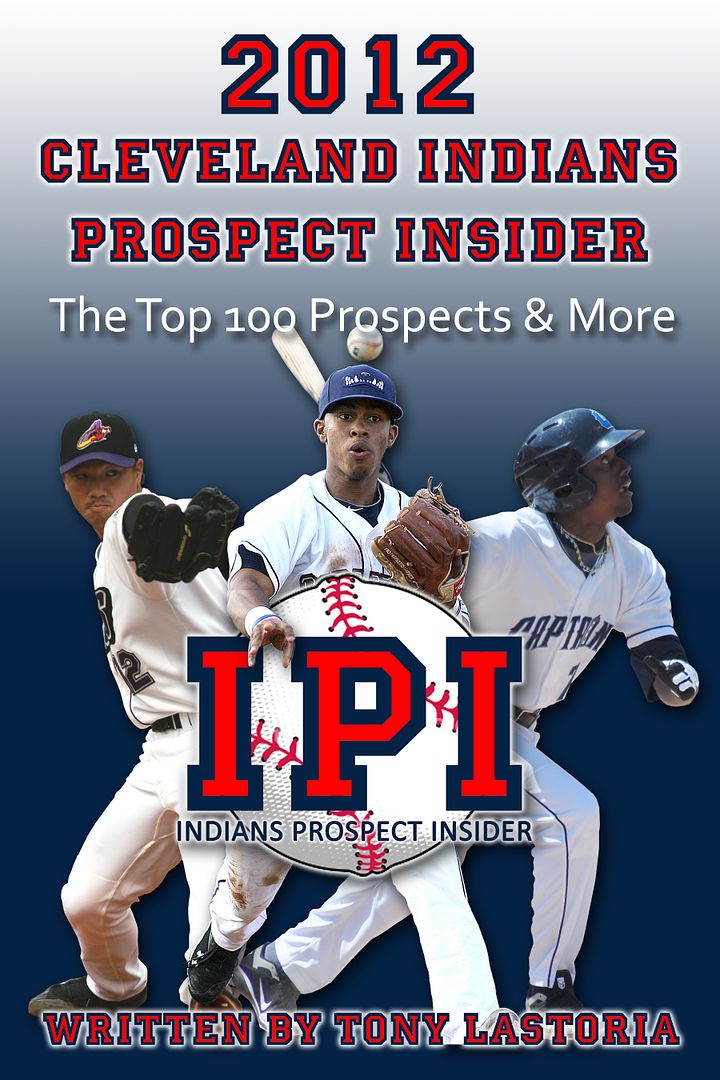
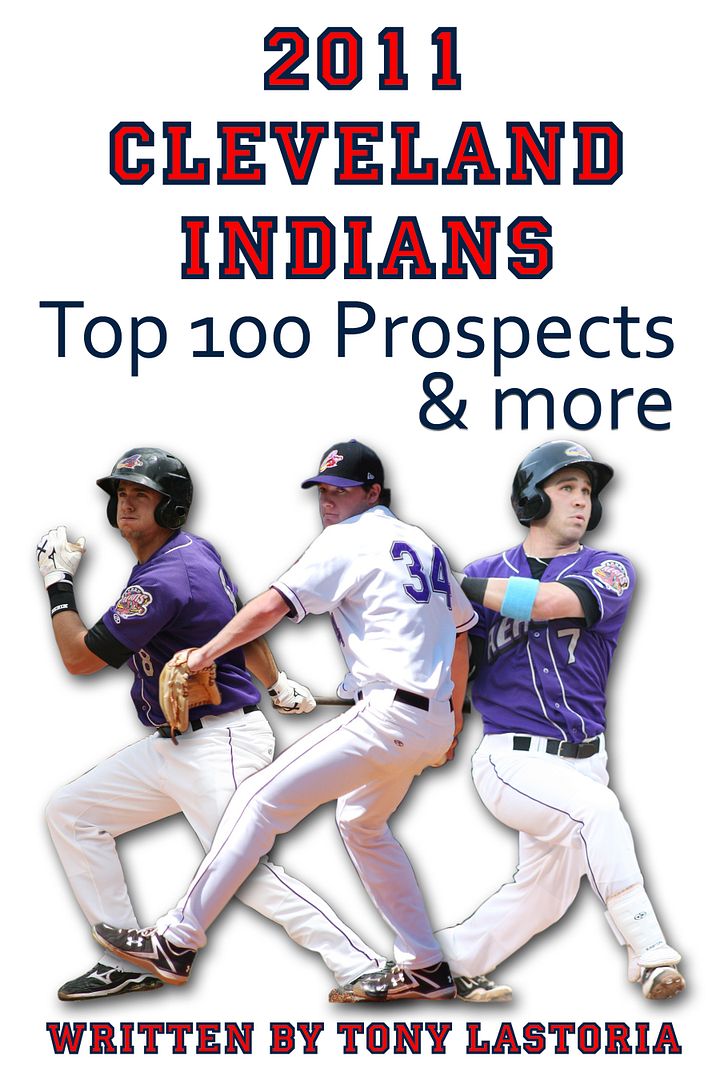
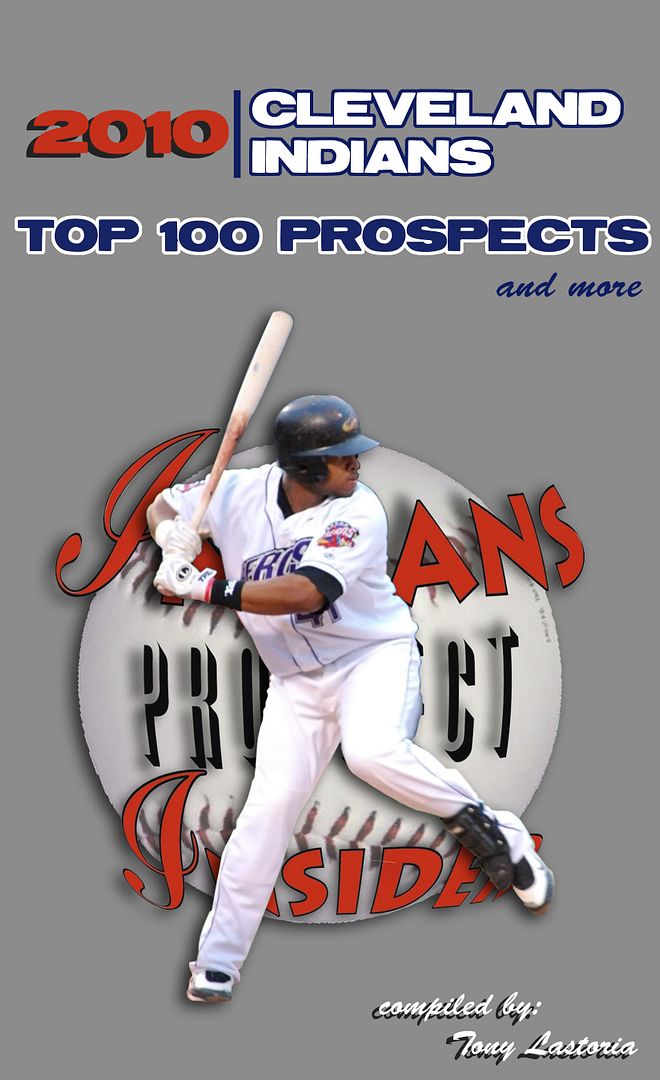
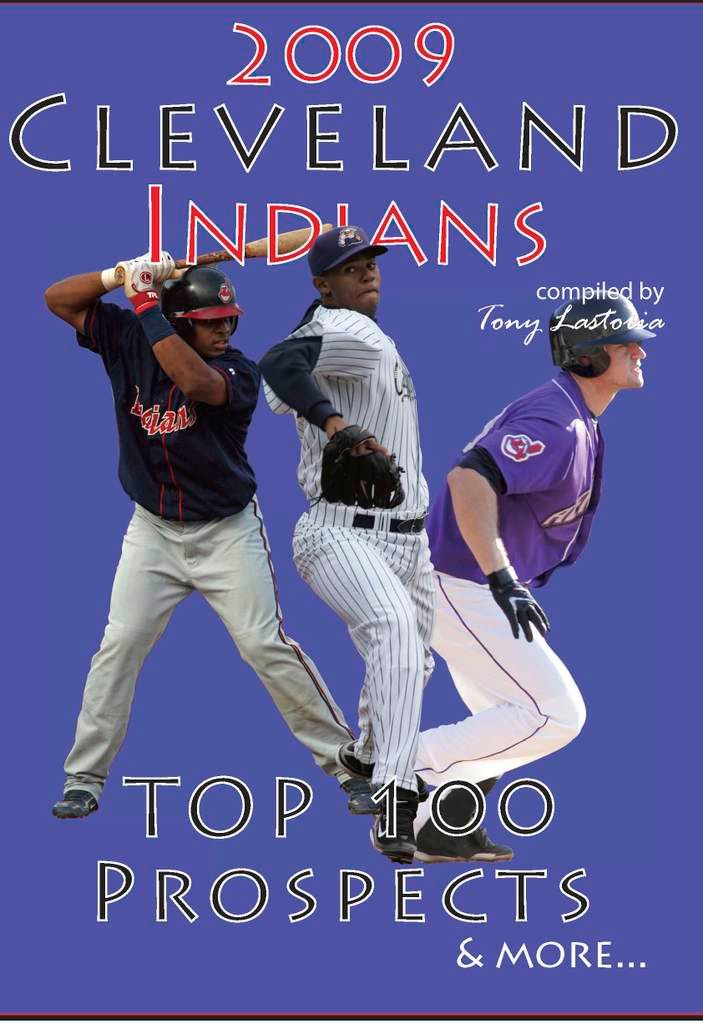
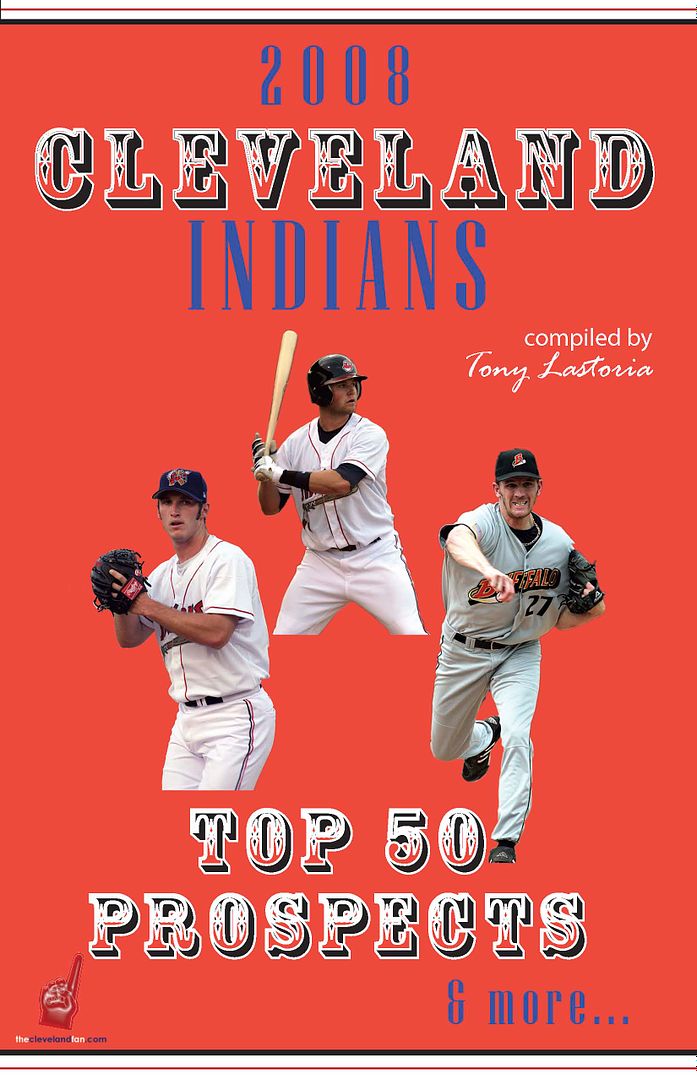
 Everything on this site is free, but for those interested in making any monetary contributions to help support the stability and growth of this site please click on the "Donate" button below.
Everything on this site is free, but for those interested in making any monetary contributions to help support the stability and growth of this site please click on the "Donate" button below.

